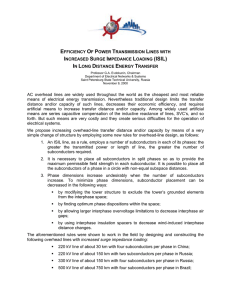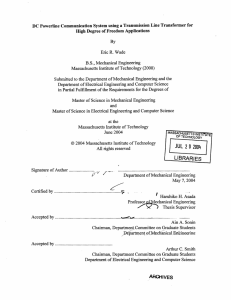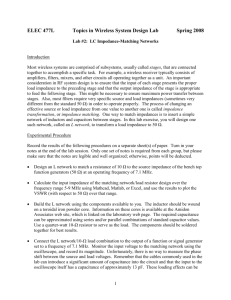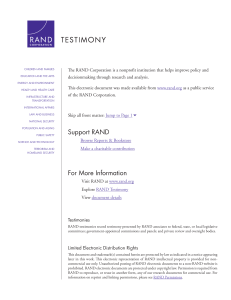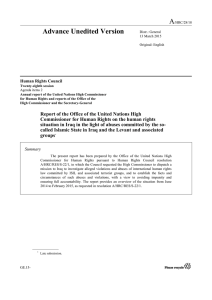Efficiency of the Use of Power Transmission with
advertisement
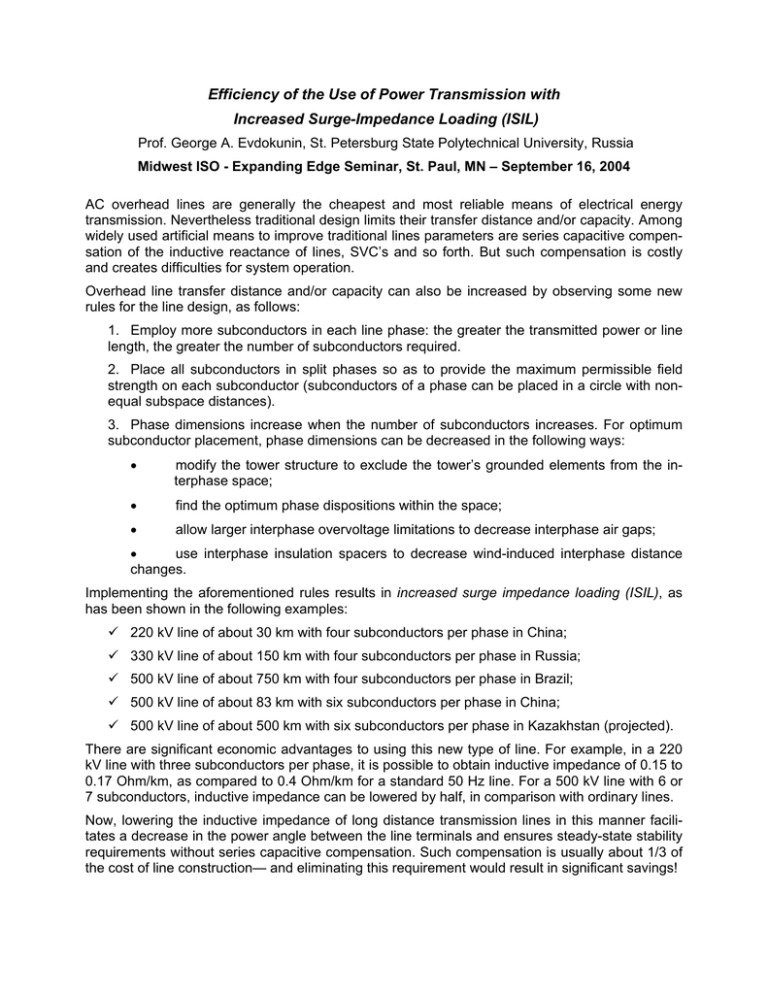
Efficiency of the Use of Power Transmission with Increased Surge-Impedance Loading (ISIL) Prof. George A. Evdokunin, St. Petersburg State Polytechnical University, Russia Midwest ISO - Expanding Edge Seminar, St. Paul, MN – September 16, 2004 AC overhead lines are generally the cheapest and most reliable means of electrical energy transmission. Nevertheless traditional design limits their transfer distance and/or capacity. Among widely used artificial means to improve traditional lines parameters are series capacitive compensation of the inductive reactance of lines, SVC’s and so forth. But such compensation is costly and creates difficulties for system operation. Overhead line transfer distance and/or capacity can also be increased by observing some new rules for the line design, as follows: 1. Employ more subconductors in each line phase: the greater the transmitted power or line length, the greater the number of subconductors required. 2. Place all subconductors in split phases so as to provide the maximum permissible field strength on each subconductor (subconductors of a phase can be placed in a circle with nonequal subspace distances). 3. Phase dimensions increase when the number of subconductors increases. For optimum subconductor placement, phase dimensions can be decreased in the following ways: • modify the tower structure to exclude the tower’s grounded elements from the interphase space; • find the optimum phase dispositions within the space; • allow larger interphase overvoltage limitations to decrease interphase air gaps; • use interphase insulation spacers to decrease wind-induced interphase distance changes. Implementing the aforementioned rules results in increased surge impedance loading (ISIL), as has been shown in the following examples: 220 kV line of about 30 km with four subconductors per phase in China; 330 kV line of about 150 km with four subconductors per phase in Russia; 500 kV line of about 750 km with four subconductors per phase in Brazil; 500 kV line of about 83 km with six subconductors per phase in China; 500 kV line of about 500 km with six subconductors per phase in Kazakhstan (projected). There are significant economic advantages to using this new type of line. For example, in a 220 kV line with three subconductors per phase, it is possible to obtain inductive impedance of 0.15 to 0.17 Ohm/km, as compared to 0.4 Ohm/km for a standard 50 Hz line. For a 500 kV line with 6 or 7 subconductors, inductive impedance can be lowered by half, in comparison with ordinary lines. Now, lowering the inductive impedance of long distance transmission lines in this manner facilitates a decrease in the power angle between the line terminals and ensures steady-state stability requirements without series capacitive compensation. Such compensation is usually about 1/3 of the cost of line construction— and eliminating this requirement would result in significant savings! Additionally, this new type of line provides significant economic advantages in comparison with conventional lines, because: power losses, interphase dimensions, line right-of-way width decrease also, saving on construction and real estate costs. For example in a 330 kV line (Russia) with four subconductors per phase— placing more subconductors in the ISIL line phases translated into a 5% increase in line construction costs. However, ISIL lines do not require series capacitive compensation, so there was a 35% decrease in line construction costs. But since the ISIL structure generally decreases linear inductive impedance while increasing linear capacitive impedance, it was desirable to install shunt reactors for compensation of the latter. This added 5% to the construction cost. But the net result of these several modifications was a savings of 15% over ordinary transmission line construction. An illustration for tower design for conversional and compact 500 kV lines in Kazakhstan is given on the following drawings (Fig. 1 and Fig. 2). Fig. 1. Tangent Tower for Conventional 500kV Line Fig. 2. Tangent Tower for Compact 500kV Line: 6 subconductors; inductive impedance X=0,167 Ohm/km; surge impedance Z=160 Ohm; surge impedance loading P=1650 MW; the phase spacing is reduced (from conventional) - 24 to 7 m. 2
